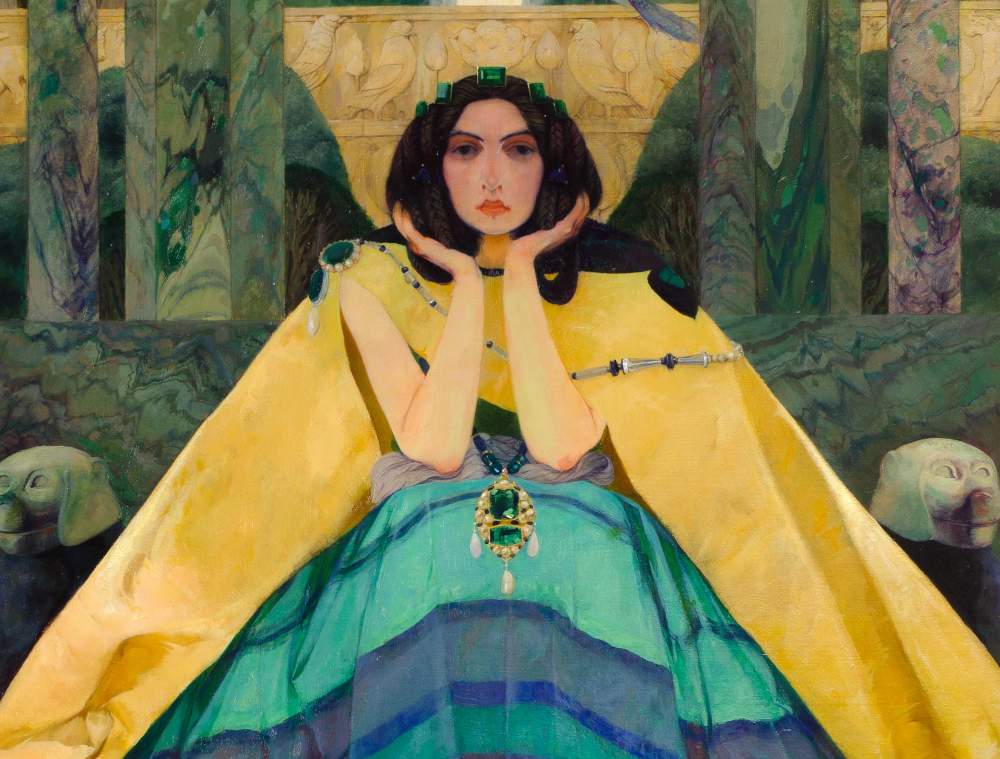At the Fortress of Bard a major exhibition dedicated to Deco in Italy, with more than two hundred works
From December 2, 2022 to April 10, 2023, the Fortress of Bard will host an exhibition dedicated to Déco in Italy, entitled Déco in Italy, the Elegance of Modernity. Set up in the rooms of the Cannoniere and the Cantine and curated by Francesco Parisi, the major exhibition presents two hundred and thirty works, including painting, sculpture, wall decorations, applied arts, posters and illustrations, through which the evolution of Déco in Italy is intended to be told. Originating from the abbreviation of the title of the famous Parisian exhibition of 1925, Exposition International des Arts Decoratifs et Industriels Modernes, the term had its precise simplifying and historical fortune in 1966, with the exhibition, also staged in Paris entitled Les années ’25: Art Déco, Bauhaus, Stijl, Esprit Nouveau.
In addition to reconstructing precisely the Italian section present at that epochal event, the exhibition intends to restore a kind of snapshot of the decorative arts of that time but also of painting, sculpture and graphics, choosing for the exhibition itinerary those works that responded both to a need for formal synthesis, especially in the Novecentist sphere, which drew on the Italian cultural tradition and the classical Renaissance language, and to a more playful and apparently more disengaged attitude.
Thus, not only Gio Ponti ’s signed ceramics for Richard Ginori and Vittorio Zecchin’s delicate Buranesi transparencies will be on display, but also works of painting and sculpture characterized by that synthetic and linear taste of Italian art in those years. Among the many works on display are Galileo Chini ’s ceramic panel that adorned the hall of the Italian Pavilion, Adolfo Wildt’s portrait of Augusto Solari, Francesco Nonni ’s ceramics and paintings by Aleardo Terzi and Umberto Brunelleschi.
Ample space will then be given to that subtle link that tied the Second Futurism to Déco. The reconstruction of the 1925 exhibition allows for the presentation of many of those works, including preparatory studies for Giacomo Balla ’s large tapestry of Futurist Genius (which adorned the Grand Palais staircase) and other tapestries and furniture designed by Fortunato Depero, as well as some set designs by Enrico Prampolini. Contiguous to futurism, the visionary works of Sexto Canegallo and Cornelio Geranzani, on the other hand, testify to some openings to certain international decorativism.
Many female portraits stand out among which is one of the most representative paintings by Giulio Aristide Sartorio, in which the artist portrayed his companion, the actress Marga Sevilla, together with her children. More corresponding to French Deco, on the other hand, are the works of Mario Reviglione including Zingaresca andthe Portrait of Mrs. Cavagnari Gori close to the famous portrait of writer Amalia Guglielminetti.
This exhibition also expands the chronological extremes hitherto used, 1919-1939, by including the years before World War I and presenting in the exhibition itinerary some historical reconstructions of relevant occasions such as the Italian Pavilion at the 1925 Paris exhibition, the Monza Decorative Arts Biennials, as well as some focuses on two influential personalities of the 1920s such as gallery owner and couturier Maria Monaci Gallenga and Riccardo Gualino.
The exhibition follows a path marked by thematic sections, but also broken down by techniques. In fact, alongside the section devoted to Monza 1923-1930 and Paris there are sections devoted to painting, sculpture, decorative arts, editorial graphics and posters. Each section of the exhibition is developed considering an active dialogue between the different artistic manifestations: Indeed, the aim is to highlight the common thread of Italian Deco taste, noting the necessary intersections of styles and guiding themes, such as dance, the mask, and the synthetic thrust in the formal pursuit of exotic animals; in the decorative arts, the focus on the natural world and Japanese asymmetries went increasingly attenuating, in favor of a certainly lighter and more sensual attitude, in which it is possible to recognize evocations from different styles, from neoclassicism to rococo, Renaissance cornucopias and, once again, mask iconographies.
Accompanying the exhibition is a catalog, published by Silvana Editoriale, edited by Francesco Parisi, which features essays by the curator and by Roberto Dulio (architecture), Stefano Andrea Poli (decorative arts), Manuel Carrera (the Déco portrait), Alessandro Botta (illustration) and Mario Finazzi (Futurism and Déco).
For info: www.fortedibard.it
Hours: Tuesday to Friday 10 a.m. to 6 p.m.; Saturday, Sunday and holidays 10 a.m. to 7 p.m. Closed Mondays.
From Dec. 26, 2022 to Jan. 8, 2023, open daily with extended evening hours until 8 p.m., with ticket office closing at 7 p.m. Exceptions are Saturday, Dec. 31: closing at 7 p.m. Sunday, Jan. 1, 2 to 8 p.m.
Tickets: Full 12 euros, reduced 10 euros. Free for holders of Abbonamento Musei Piemonte Valle d’Aosta and Abbonamento Musei Lombardia Valle d’Aosta, Forte di Bard Membership Card, and for under 25s.
Image: Umberto Bottazzi, Circe, detail (1931; private collection, Rome) Foto Artegrafica
 |
| At the Fortress of Bard a major exhibition dedicated to Deco in Italy, with more than two hundred works |
Warning: the translation into English of the original Italian article was created using automatic tools. We undertake to review all articles, but we do not guarantee the total absence of inaccuracies in the translation due to the program. You can find the original by clicking on the ITA button. If you find any mistake,please contact us.





























